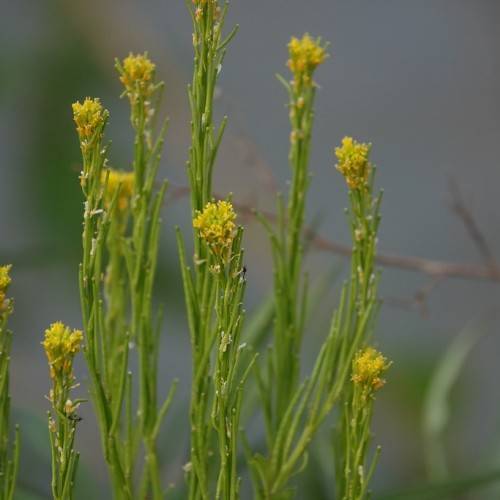
Small-Flowered Wintercress
Barbarea stricta
Watering:
Minimal
Hardiness Zone:
Sun:
full sun
Fruits:
Fruits Ready In Summer
Leaf:
Yes
Growth Rate:
Low
Drought Tolerant:
Yes
Care Level:
Medium
watering
Cream Wild Indigo (Baptisia leucophaea) should be watered once or twice a week depending on the season and soil type. During the warmer months, when temperatures are above 70 degrees Fahrenheit, the plant should be watered about every 3 days. The soil should be damp, but not waterlogged. During the winter months, reduce watering to 1-2 times a month. In more arid climates, it is wise to provide the plant with a deep weekly watering, so that the roots have access to moisture. The plant also benefits from a layer of mulch to help retain moisture.
sunlight
Cream Wild Indigo (Baptisia leucophaea) prefers full sun and can tolerate partial shade. This plant species appreciates 8 to 10 hours of direct sunlight per day. When growing in partial shade, the plant should receive at least 4 hours of direct sunlight daily. It is best to provide this plant with morning sunlight and some shade during the hottest part of the day.
pruning
Cream Wild Indigo (Baptisia leucophaea) is an herbaceous perennial that can reach heights of up to 3 feet. Pruning is generally best done in the late winter or early spring, before new growth appears. All dead, diseased, broken, or otherwise unhealthy canes should be removed at this time. Prune to maintain the plants desired shape and size; remove stems back to the ground to rejuvenate the plant. All cuts should be made to the lateral buds or branches and no more than 1/3 of the shoots should be removed. Pruning early in the season will also help the plant focus its energy on new growth instead of producing seedpods.
